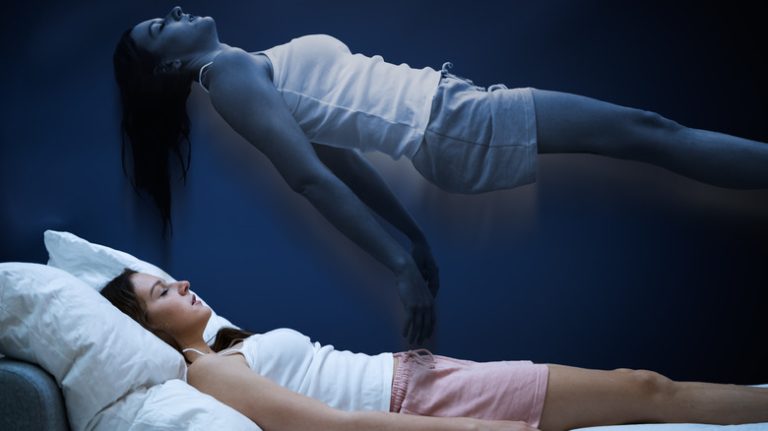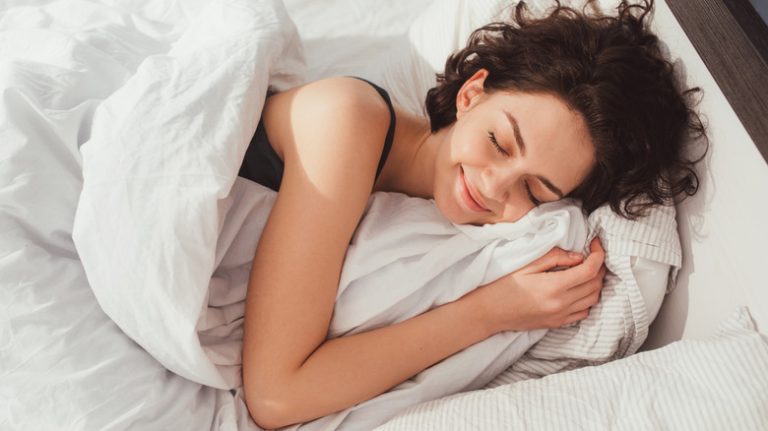Feeling good after a great night’s sleep can make all the difference in the world to your day, and even your life. If you can’t get to sleep, it’s not only frustrating, but it can leave you feeling irritable and grouchy, not to mention lethargic (via Healthline). The concept of pressure points in the body, and using these to help with sleep as well as other issues, is nothing new. In fact, the use of acupressure points to improve health and wellness is part of what are called Asian bodywork therapies, which have roots in traditional Chinese medicine (via WebMD).
Pressure points are used to promote health through balancing negative and positive energies that oppose each other. Followers of this type of therapy purport that these energy channels are naturally present in the body. Acupressure is performed when pressure is put on particular pressure points, or acupoints, which are also used in acupuncture. There are practitioners for pressure point work, which may involve other types of massage and stretching as well. However, you can also try this at home and use your fingers to activate these acupoints yourself. It’s just a matter of knowing how, and seeing what works for you. Whether you’re a chronic insomniac or want to ensure a good night’s rest, you may want to build into your bedtime some soothing acupressure using some of these sleep-promoting pressure points.
Acupressure is non-invasive acupuncture
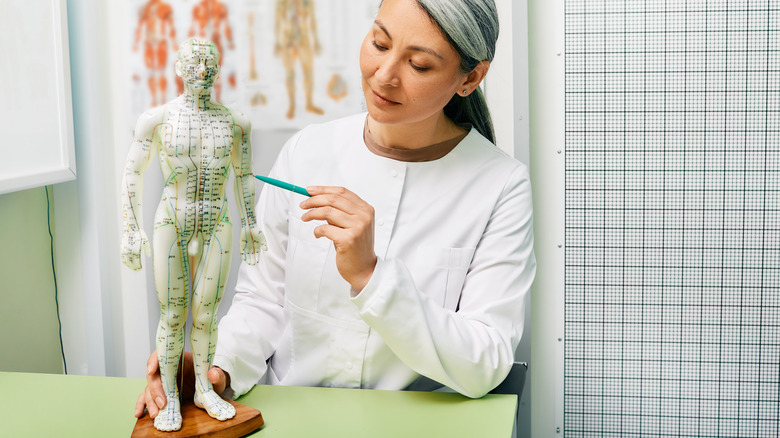
If the thought of having needles stuck in various parts of your body doesn’t appeal, then acupuncture may not be a treatment you’re prepared to try. However, you can still strike at the same points with acupressure. And while you’ll need a professional to perform acupuncture, you can target your own pressure points with touch or massage if you’re seeking an insomnia remedy (via Forbes). Both methods focus on stimulating meridian points, which are akin to energy channels. These pathways move qi (pronounced “chee”), which doctor of acupuncture and Chinese medicine Jill Blakeway tells Healthline is, “the body’s innate intelligence.”
Acupressure works by putting pressure on specific points, which in turn stimulates certain neuropeptides to be released. Advocates of this technique believe that this can then target issues like sleeplessness by unblocking the flow of qi. Dr. Ka-Kit Hui, the director of the UCLA Center for East-West Medicine, explains to Forbes the advantages of this therapy: “The most exciting thing about acupressure is that it’s an inexpensive, safe, and simple form of self-care and self-healing.” Both acupuncture and acupressure work on the principle that lifestyle and ailments can create blocks that prevent or impede the body’s natural ability to create inner balance and health. Proponents of both therapies may suggest using both in conjunction, or individually alongside traditional medical support, depending on the severity and type of condition, as well as any root causes.
Studies suggests acupressure helps insomnia
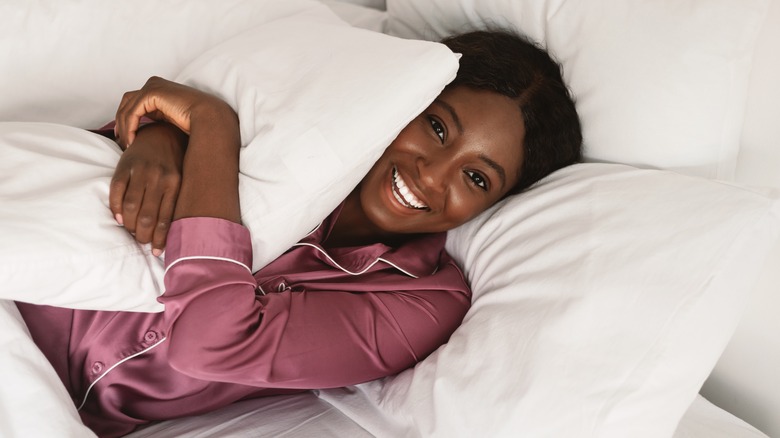
You may understand the concept of how acupressure supposedly works, but will it actually get you nodding off into a dreamy sleep? As with all types of alternative therapies, there’s no definitive truth. But there is some scientific evidence to suggest that acupressure could help achieve a restful night’s sleep. This was the conclusion of a multi-disciplinarian pilot trial carried out in Hong Kong (via Journal of Sleep Research). The trial involved looking at the effects of teaching self-administered acupressure to a group of insomniac subjects as compared to the control group, who was educated about sleep hygiene. The research concluded that self-administered acupressure may be a worthwhile treatment approach for insomnia, though they assert more research is needed. Similarly, an earlier Italian study published in Minerva Medica also concluded that acupressure could benefit those with sleep issues, particularly if their sleep problems derived from cancer or other health disorders.
Heart 7
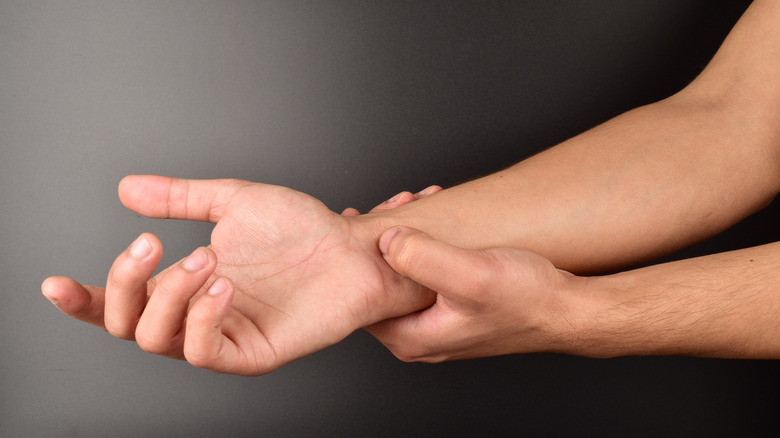
Funstock/Shutterstock
Different pressure points are denoted as being connected with certain parts of the body, and with specific conditions too. Therefore, it’s important to know where the points are that prescribed as being able to deal with insomnia are located. One of these, Heart 7, is known as “spirit gate” and is believed to help guard against insomnia (via Medical News Today).
Heart 7 (H 7) is a point that’s found on the wrist, on the outer side. You can locate it by putting your finger on your wrist where it creases. There’s a small bone that is line with your pinkie finger, and the point is next to this, on the side of the bone that is toward your ring finger (via Healthline). In one study published in Minerva Medica, the Heart 7 acupressure point was put under the spotlight. In 60% of patients with sleep disorders, improvements were observed after a couple of weeks of the point being stimulated. It was concluded that Heart 7 was effective in dealing with sleep disorders, particularly in respect to cancer-related insomnia.
Anmian point
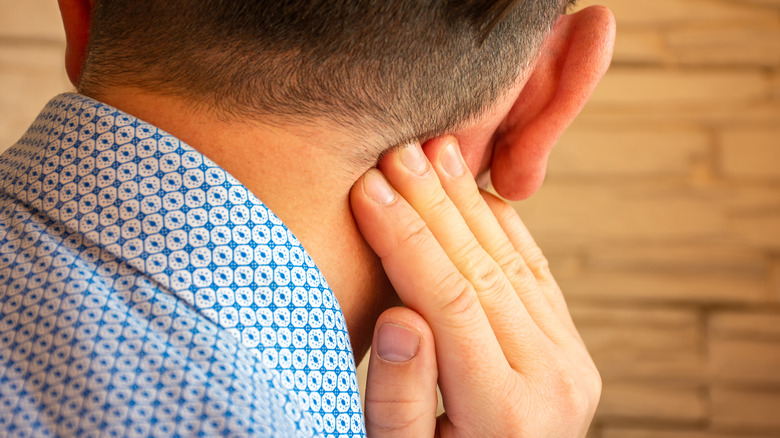
Shidlovski/Shutterstock
Traditional Chinese Medicine holds that sleeplessness is connected to an inner spirit that isn’t settled or calm (via Health In Flow Chinese Medicine). Due to this, the Anmian point is regarded as an important acupressure spot, because it’s believed to create the feeling of calmness that’s essential for a good night’s sleep. Anmian translates to “peaceful sleep,” and it’s by relaxing yourself that you can hope to achieve that.
To find the Anmian point, put your finger behind your ear, a little behind your earlobe. You should feel a bone that’s sticking out and points down. Once you’re touching the part that protrudes, let your finger slide back from the bone slightly so it fits into the concave part. You’re nearly there. In a diagonal, backward movement, shift your finger about a centimeter. The Anmian point, which is just at the bottom of your skull, may feel tender and little uncomfortable as you apply pressure, but it’s ultimately aimed at relaxing you. You can use your thumb or finger to stimulate this point. Press and massage in small circular movements with a little pressure upward toward the head, and keep going. You can stimulate this point many times, but don’t be too firm as this can cause damage to the styloid processes, which are thin projections that are responsible for movement in that area — including of the tongue and larynx — and which are surrounded by main vessels and nerves (via Taking Charge of your Survivorship at the University of Minnesota).
Gallbladder 20
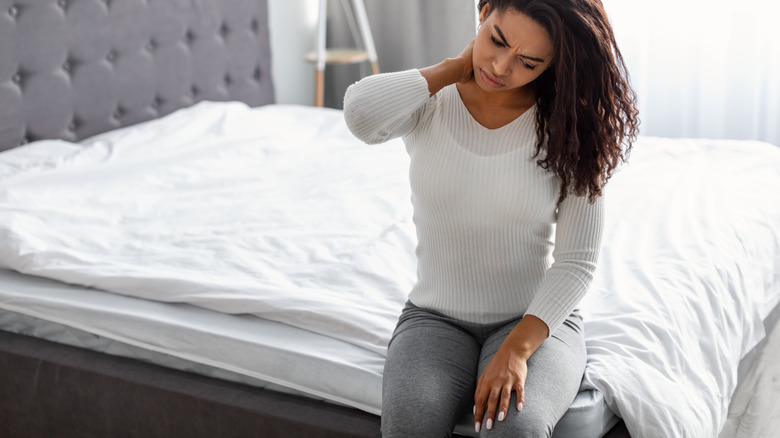
Prostock-studio/Shutterstock
Known as the “Wind Pool,” the Gallbladder 20, or GB 20, pressure point is not too far from the Anmian point (via Miridia Acupunture Technology). As the name clearly suggests, this point is believed to be connected to the gallbladder. This point is also renowned for relieving headaches, clearing the head, and making the hearing better, not to mention tackling insomnia. GB 20 feels like a natural point to massage, and it’s possibly one that you’ve gravitated toward rubbing already.
Whereas it may take some practice to locate some other acupressure points, this one is fairly straightforward. It’s located at the top back of your neck in a depression. To find the GB 20 points on both sides of your neck, put your fingers where your neck and head meet, in the middle. From here, slide your fingers over the thick tendons that run at either side, and let them fall into these soft pool-like hollows. Massage several times a day with light to moderate pressure if you find it helpful, doing so for a few minutes at a time (via Learn Religions). With this point, you can either use massaging circular movements or simply press down to relieve insomnia (via TCM Simple).
Yin Tang
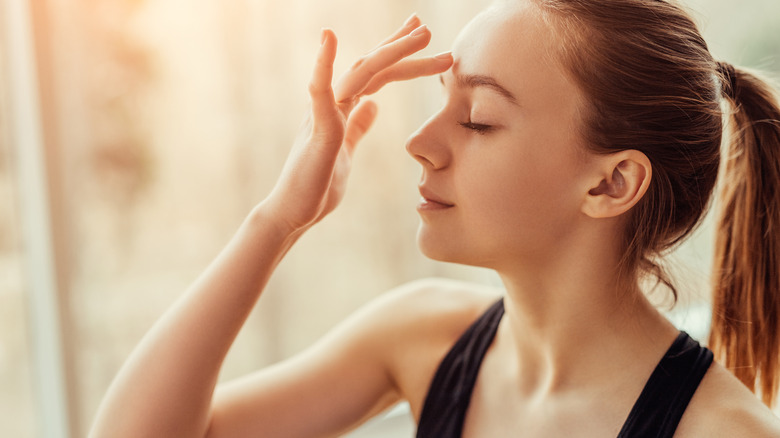
Max kegfire/Shutterstock
You may have heard of your “third eye,” which is also known as Yin Tang, and it’s an important acupressure point that is purported to aid restful sleep (via Dreams). You don’t need to look very far for it, because it’s actually right between your eyes. Put your finger on your forehead between your eyebrows and you should find a little indentation that fits your finger. This is your Yin Tang point, and activating is also believed to relieve tension in your jaw, neck, and shoulders, which has to be positive for sleeping well too.
You’re going to use four fingers for this acupressure exercise, which are the first and middle fingers of each hand (via Learn Religions). Put your fingertips on the space between the eyebrows. Gently massage, and go with whatever direction feels right for you, keeping the movements circular. Relax the muscles in your forehead as you do this. Imagine the muscles are softening in the direction of your head. They should feel as if they’re moving inward, and this helps relax the whole face. It’s also claimed that simply drawing your inner focus to this acupressure point can activate it as well.
Pericardium 6
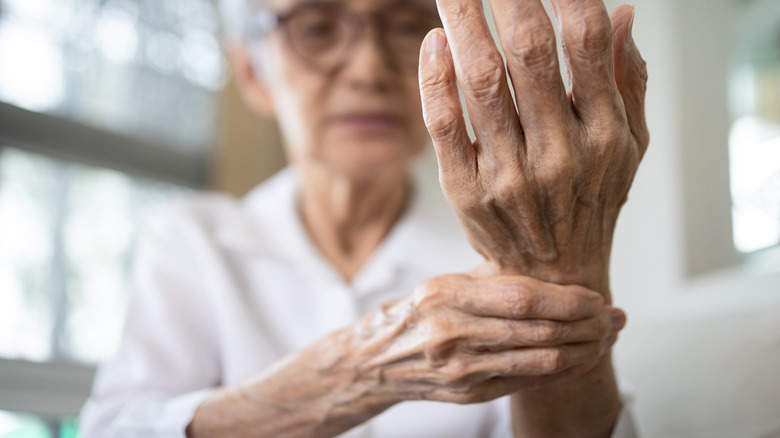
CGN089/Shutterstock
The “Inner Gate” is also known as the P 6 or Pericardium 6 acupressure point (via Force Medic). Located on the arm, this is another point that’s been identified as helping ease insomnia. It’s also connected to other ailments that could affect sleep quality too, such as stress and anxiety, nausea and vomiting, as well as PMS in women. To locate the point, place three fingers across your inner forearm. The top finger should be at the top of your wrist. At the bottom, below your fingers, is where the P 6 acupressure point is found. Use your thumb to put firm pressure on this point (via Healthline). Massage one side first, and then switch to the other arm, making sure that your breathing isn’t shallow or too quick as you apply the pressure. Make circular motions for this point, massaging for a minute or two (via Force Medic).
Spleen 6
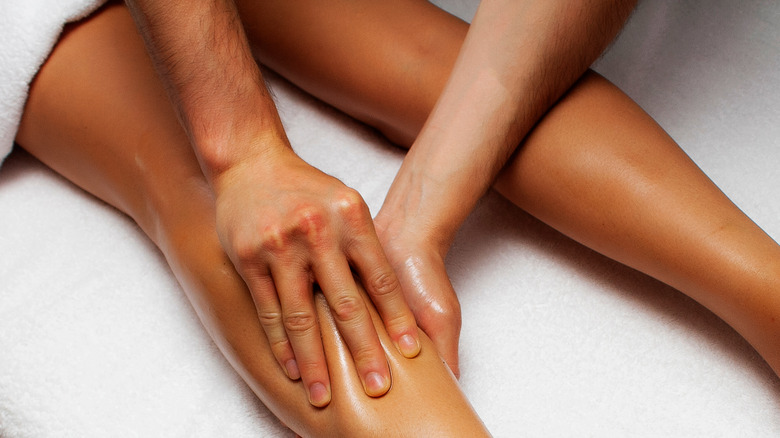
Yuliya Loginova/Shutterstock
A systemic review of studies into the efficacy of the Spleen 6 (SP 6) acupressure point to treat insomnia highlights it as one of the most used acupoints for this condition by clinical physicians (via Global Health & Medicine). Though the authors note that research on the subject isn’t conclusive, they found some evidence that stimulating this point could potentially have a positive impact on sleep quality. Indeed, stimulation of SP6 was connected with not only a longer, deeper sleep, but more REM sleep too.
Locate SP 6 on the leg, above the ankle (via Press This Point). Put your little finger at the top of the bone that protrudes on the inner side of your ankle. Your hand can rest on your leg, and keep it flat. Where your index finger lies, on the edge closest to your thumb, is where SP 6 is located, just behind the bone. Cross one ankle over your other leg to reach the point easily, or sit cross-legged to work on both at the same time. Be firm and grip your leg to get the right pressure with your thumb. Because it’s linked to inducing labor, this acupoint isn’t recommended for use by pregnant women for insomnia (via Medical News Today).
Liver 3
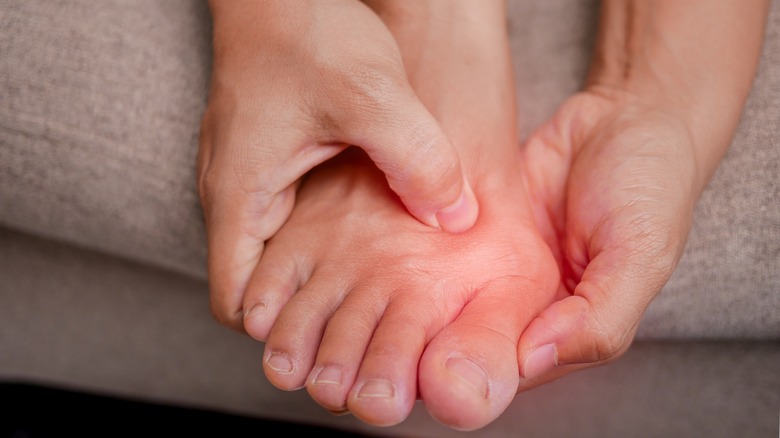
T.Photo/Shutterstock
Found on the top of the foot close to the big toe, acupoint Liver 3, or LV 3, is also known as Tai Chong, which translated to English means “Great Surge.” As highlighted by Yin Yang House, it’s yet another acupressure point for such problems as insomnia, stress, digestive issues, and anger, as it has a calming effect.
To locate this point, which is on the liver meridian, put your finger where your big toe meets your second toe (via Oriental Remedies Group). Trace back along the webbing between them until you feel a dip. This is the acupoint you’re looking for. You may find that this point is a little tender, so go easy on the pressure as you either press down or massage. Of course, since you have two feet, you can do acupressure with LV 3 on both. You can do that a few times a day if you feel it is helping. Since this is the most important pressure point for anxiety, if you feel that is what’s stopping you from falling asleep quickly, it’s definitely one to try.
Kidney 3
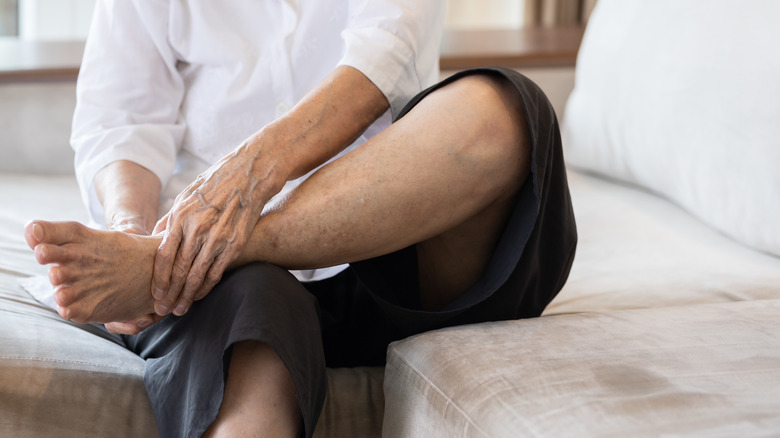
CGN089/Shutterstock
Kidney 3 (KD 3) is on the kidney meridian and is located on the foot, which has many acupressure points. It’s also known as Taixi, or “Great Ravine,” and it’s linked to helping induce sleep or at least easing insomnia. Good sleep isn’t just about falling into that state easily — it’s also about good sleep quality, and this is where KD 3 is said to help (via 4Ever Best Health Center). This acupoint is used for excessive dreaming too (via Yin Yang House).
According to Mend Acupuncture, you can find this point in the dip on the inside of your ankle, sitting between the ankle bone and your Achilles tendon. Activate KD 3 by pressing down with a firm massage. Before applying pressure, you may want to begin with some deep breathing as you sit comfortably with your eyes closed. As with many of the acupressure points, you can repeat this exercise whenever you like.
Kidney 1
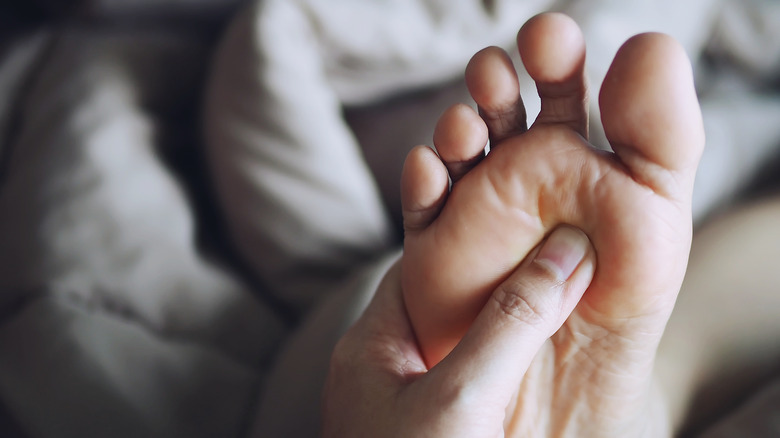
Boontoom Sae-Kor/Shutterstock
The kidney meridian is the source of acupoint therapy for stress-related conditions, and Kidney 1 (K 1) — which is also known as the “Bubbling Spring” — is where this channel begins (via Yiska Obadia). Not only can pressure on this point calm the nervous system, it is also known for reducing the fight-or-flight response. This reaction in the body creates stress hormones that can be useful in situations in which your survival might be at stake (via Harvard Health Publishing). In other situations these hormones can also result in taking away energy from other important systems and functions, resulting in knock-on effects such as sleep problems.
K 1 is located in the middle of the sole of the foot, about a third of the way down between the bottom of your big toe and your heel (via Big Tree Healing). This point can be stimulated with pressure or massage (via Yiska Obadia), or according to Big Tree Healing, you might choose to stand and place your inner focus on this point in both feet. If you do this, make sure you’re focusing on your breath and that you relax and soften your body as you connect.
Insomnia is a national disorder
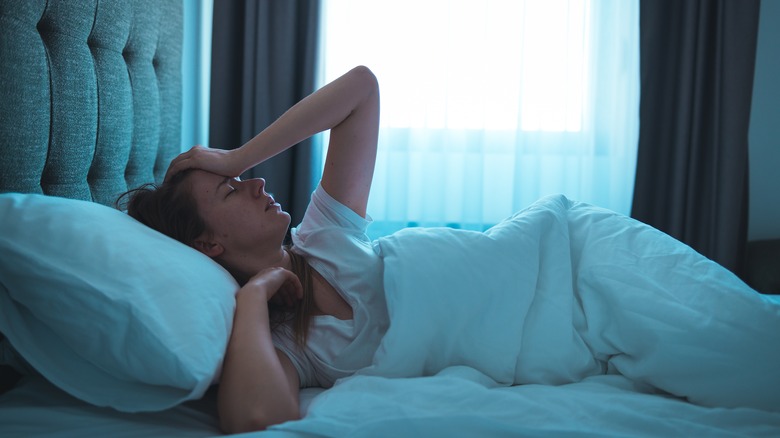
Dragana Gordic/Shutterstock
If acupressure can help with insomnia, it may be well worth trying, for a large number of people — both chronic sleep deprivation and periodic sleeplessness plague many Americans. Adults up to 64 years old need around seven to nine hours of sleep per night (via Cedars Sinai). However, many in the U.S. are not getting enough shuteye. Indeed, according to the Sleep Foundation, some 10-30% of adults in the U.S. suffer from chronic insomnia, with about 35% getting less than seven hours of kip per night. Women are 40% more likely than men to find getting to sleep difficult. Older people are also at higher risk of insomnia, with rates shooting up to 30-48%.
The consequences of sleep deprivation can be severe. For instance, work-related accidents and errors are seven-time more likely to occur if you’re sleep-deprived, and over 6,000 fatal car crashes in the U.S. every year result from drivers being overtired. The economic impact of not getting enough sleep is estimated to around $411 billion annually in America. So, making sure you’re getting yourself to bed on time with enough time to sleep is vital, as is falling asleep when you want and need to.
Other tips on falling asleep
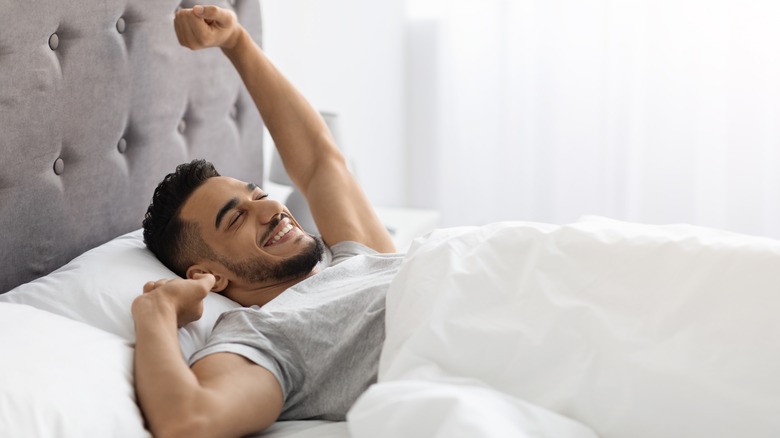
Prostock-studio/Shutterstock
Though acupressure if one possible remedy to bringing on sleep, Medical News Today suggests using it in combination with other good sleep hygiene practices such as ensuring your room is dark, relaxing yourself with music or soothing lotions, or getting in some time for quiet meditation to calm your mind before sleep. You may also want to avoid known sleep-inhibitors (via The Conversation). For instance, caffeine and alcohol can disturb your sleep tremendously.
If you find yourself tossing and turning, don’t keep staring at the clock — this will only add to any anxiety you already feel about not sleeping. Get up and do something non-digital if you’ve been lying awake for at least half an hour. Whether you read or do another quiet activity, keep the lights fairly low, and try to sleep again once you feel your eyes drooping. Repeat this if it’s necessary.


